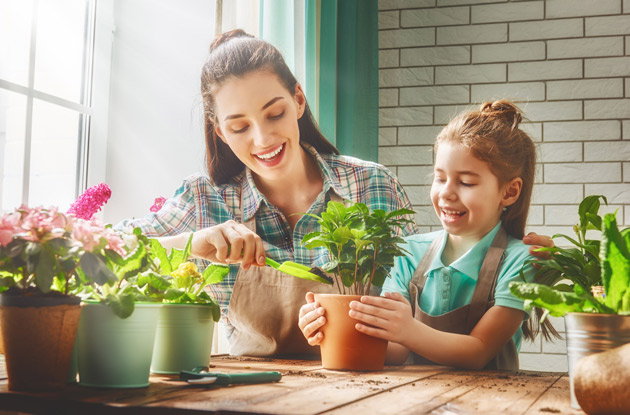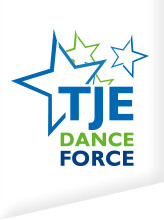With green living being as popular as ever—especially with more and more eco-friendly, toxin-free products hitting the shelves—you may be wondering what you can do in your home to reduce toxins and make it a healthier place for your family. We spoke to experts to find out the key areas in the home you should focus on to make your living space a little more eco-friendly.
Do you want to detox your home but don’t know where to start? Got a couple of green products in your kitchen but want to know what else you should you be doing? Consider this: The average family is exposed to thousands of environmental toxins and the majority of this occurs in the home. The good news? There are simple things you can do to make your living space greener and healthier for your family.
“The first point I would say is don’t get overwhelmed,” reassures Nneka Leibe, director of healthy living science at the Environmental Working Group. “There are simple changes that can make an impactful difference.”
Here are five expert-approved priority tasks you can do in your home to go a little greener:
Improve your air quality.
“One thing people don’t realize is that the indoor air is a poorer quality than the outdoors. Even in cities,” says Maia James, green home consultant and founder of gimmethegoodstuff.org. In fact, indoor air is as much as two to five times more polluted than air outside.
“A lot of people are thinking about the pollution they are exposed to outdoors,” Leibe says. “When we started to dig into the products we have indoors, we realized that a lot of the things we have in our home and furniture either release chemicals or are made with chemicals that we suggest to avoid.”
Don’t panic: You can improve your air quality quickly by replacing many of the items below.
- Poly Vinyl Chloride (PVC), especially the flexible kind found in products such as shower curtains, toys, raincoats, and kids’ mattress covers. Made from extremely toxic chemicals called dioxins, flexible PVC releases phthalates, which are known endocrine disrupting chemicals (EDCs). As their name suggests, EDCs can interfere with hormones and the organs that produce them, such as the thyroid and reproductive system. EDCs also may be linked to health problems including cancers, thyroid problems, infertility, developmental delays, and possible immune system changes, according to the World Health Organization. Plus, a 2013 study published in Environmental Health Perspectives found a link between phthalates and asthma.
- Flame-retardants. Another group of EDCs, these are found in the polyurethane foam in couches, pillows, mattresses, children’s products, and upholstered furniture. The most toxic flame retardants (polybrominated diphenyl ethers aka PBDEs) were banned in 2006, so older furniture is more dangerous. Many pieces of furniture are now made without flame-retardants; look for the TB117-2013 label or call the manufacturer to check. Although it’s not always possible to replace large pieces due to cost, try to prioritize children’s mattresses and pillows—kids spend a lot of time sleeping with their faces next to them.
RELATED: More ways to green your kids' rooms.
- Conventional cleaning products and air fresheners. Many of the cleaning products and air fresheners in our homes contain chemicals that are released into the air, such as ammonia (an asthma trigger), quaternary ammonium compounds (may cause birth defects), and synthetic fragrance (contains phthalates), according to Leibe. However, manufacturers rarely put the full ingredient list on the side of the bottle. Check the Environmental Working Group’s Guide to Healthy Cleaning or apps such as Good Guide to find out what’s in your kitchen cabinet. Thankfully, there are now many safer choices in stores.
- Dry cleaning uses perchloroethylene or PERC, which the U.S. Environmental Protection Agency considers to be a carcinogen. PERC can remain on your clothes and is released into the air during cleaning. If you can’t avoid dry cleaning completely, James recommends airing dry-cleaned clothes outside before bringing them inside, and looking for dry cleaners that use a liquid carbon dioxide or silicone method instead.
- Traditional building supplies. The EPA warns that paints, sealants, and adhesives can release Volatile Organic Compounds (VOCs) such as formaldehyde and benzene into the air, even when you can no longer smell them. VOCs are known to cause eye, nose, and throat irritation; damage to the liver, kidneys, and central nervous system; and are a suspected carcinogen, according to the EPA. Choose low and non-VOC products or buy a VOC sealant to paint over the top. Keep children and pregnant women away from painting or sealing projects.
- Particle wood and MDF releases small amounts of formaldehyde into the air from the glues that hold it together, according to the EPA. If real wood isn’t an option, choose a product that is GreenGuard or California Phase 2 compliant for a low emission standard.
- Furniture with waterproof or stain-guard finishes. These are made with perfluorinated chemicals (PFCs) that have been linked in multiple studies, including a 2015 study from Maternal-Infant Research on Environmental Chemicals, to health problems such as infertility, cancer, and thyroid disease.
- Chemical pesticides. Children’s exposure to insecticides in the home increases their risk of developing leukemia or lymphoma, according to a meta-analysis published by the American Academy of Pediatrics. Use natural methods instead.
- Synthetic carpet can emit many toxins including VOCs, PFCs, and EDCs. Choose wool rugs and wood floors, but make sure your rug doesn’t contain toxic glues or PVC, and use non-VOC sealants on wood floors. If using carpet, look for one certified as low VOC.
- Lead paint, asbestos, and radon gas are known toxins or deadly carcinogens and require specialist removal or mitigation. Lead is commonly found in paint in buildings built before 1978, asbestos is found in building supplies and insulation, and radon gas is naturally occurring. Visit epa.gov for details on how to get your home tested—and never attempt to remove these substances yourself.
If you want to go one step further, James recommends investing in an air filter to actively clean the air. For a low-fi option, you can add wool rugs and plants—both have been shown in studies to be natural VOC absorbers. And don’t forget to open your windows every day!
Get the Best Family Activities
Sent to You Weekly!
Reduce household dust.
Those dust bunnies may look harmless, but nasties like lead, phthalates, BPA, flame-retardants, PFCs, and chemicals from cleaning products lurk in them. Gary Ginsberg, Ph.D., an assistant professor and toxicologist at Yale School of Public Health, has studied household dust extensively. He says dust is a key source of children’s exposure to contaminants at home, with levels of phthalates, lead, and flame-retardants in dust relating closely to levels in blood and urine. Children and babies ingest a lot because they spend more time on the floor and put things in their mouths. They are also much smaller and still developing, so toxins have a much bigger potential impact on their health.
Vacuum regularly using a HEPA filter vacuum, wet-mop floors, and wipe down surfaces. Fit filters to heating and air-conditioning units, take off your shoes when you get home, and use a doormat to reduce the amount of outdoor dust and soil coming into your home.
Buy a water filter.
“Another small change that is really impactful is purchasing a water filter,” Leibe says. The quality of tap water can vary widely, so it’s important to check yours via your water utility’s website or a resource like the EWG Tap Water Database. Just make sure to regularly clean the water container and change the filter.
Switch to cleaner personal care items.
Many beauty products contain small amounts of chemicals, including EDCs and lead. James recommends starting with the products that are used the most often and on the biggest areas such as moisturizers, sunscreen, and shampoos. Many people are surprised to hear the U.S. Food and Drug Administration does not require safety testing for personal care and cosmetic products, so it’s up to the consumer to check labels. The EWG Skin Deep Cosmetics Database is a great resource for researching ingredients as are apps such as Think Dirty, which let you check on the go.
Ditch plastic and non-stick cookware.
Replace plastic bottles with stainless steel or glass. The dangers of BPA are well known, but the plastics used to replace it (like bisphenol S aka BPS) are also thought to contain EDCs, according to the EWG and James. Never heat food in the microwave in plastic as this can lead to chemicals such as phthalates leaching into it, and replace non-stick cookware as these are made with PFCs.
RELATED: How to Green Your Lunchbox
Don’t obsess.
All of the experts interviewed were keen to emphasize that we should not be lying awake at night (on our non-organic mattresses) panicking. “I know it’s hard to not freak out about this stuff as you begin to educate yourself,” James says. “But it’s helpful to remember that it’s all about cumulative risk. No one item in the home is going to make or break your family’s health.”
“It’s not a life or death situation,” Dr. Ginsberg agrees. “There are a lot of low-level risks out there. We are doing much better today than we were when I was a kid. We don’t want to overwhelm people because then [they] will be paralyzed.”
“All of these changes combine to reduce our body burden of chemical exposure,” Leibe adds. “They’re small changes but very, very important to reducing the number of chemicals we’re exposed to that lead to adverse health impacts.”
The onus is now on us, as consumers, to do the legwork to find out what’s in the things we use. “The biggest piece of advice is that because of lapses in regulation, parents have to become amateur investigators,” Leibe concludes. “They can’t rely on claims and advertising hype.”
By increasing your knowledge and making smart choices, it is possible to make your home a greener and healthier place. So you can sleep better in more ways than one!
Main image: Some plants, such as Spider Plants, Mother-in-Law’s Tongue, Peace Lilies, Aloe Vera, and Garden Mums are natural air purifiers, according to NASA. So this Earth Day, why not take your kids to pick out a little greenery for your home?





